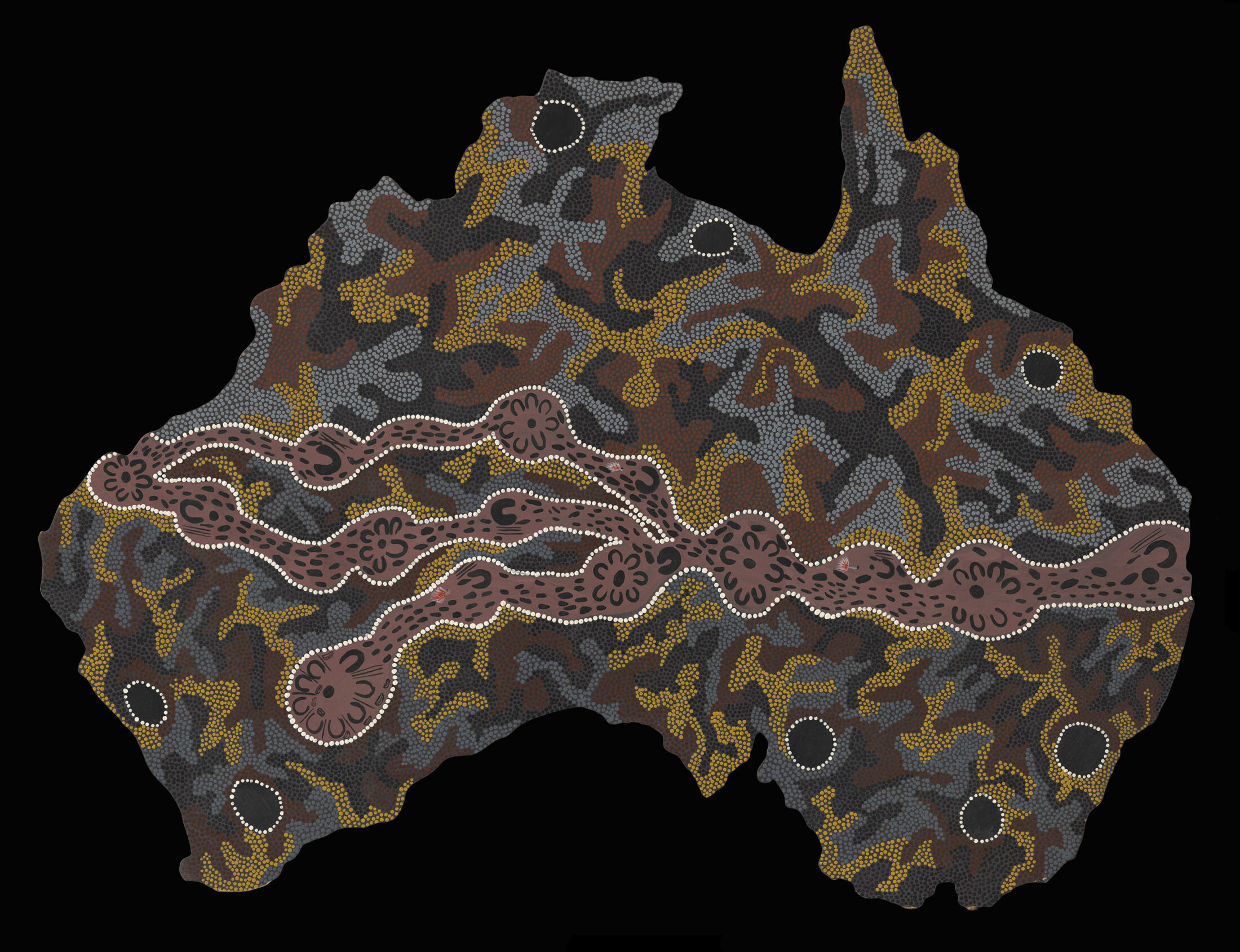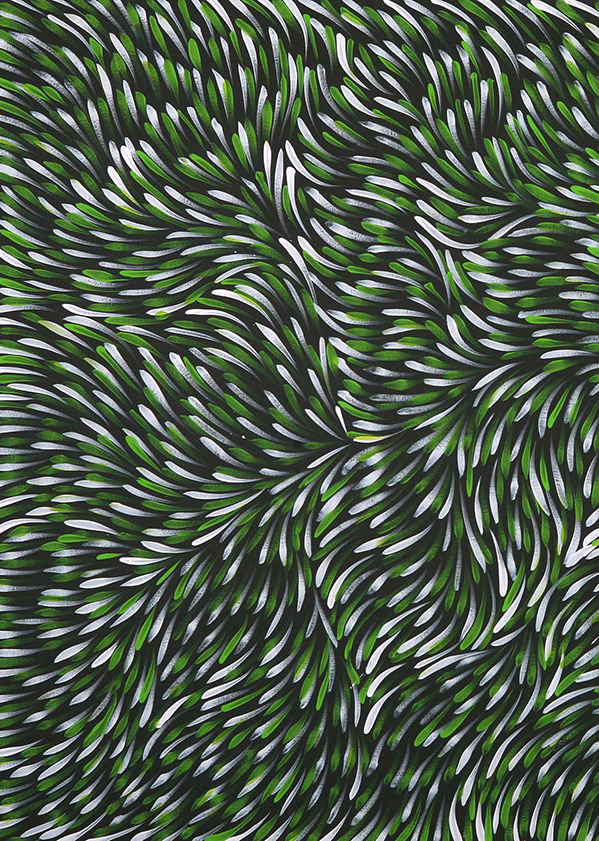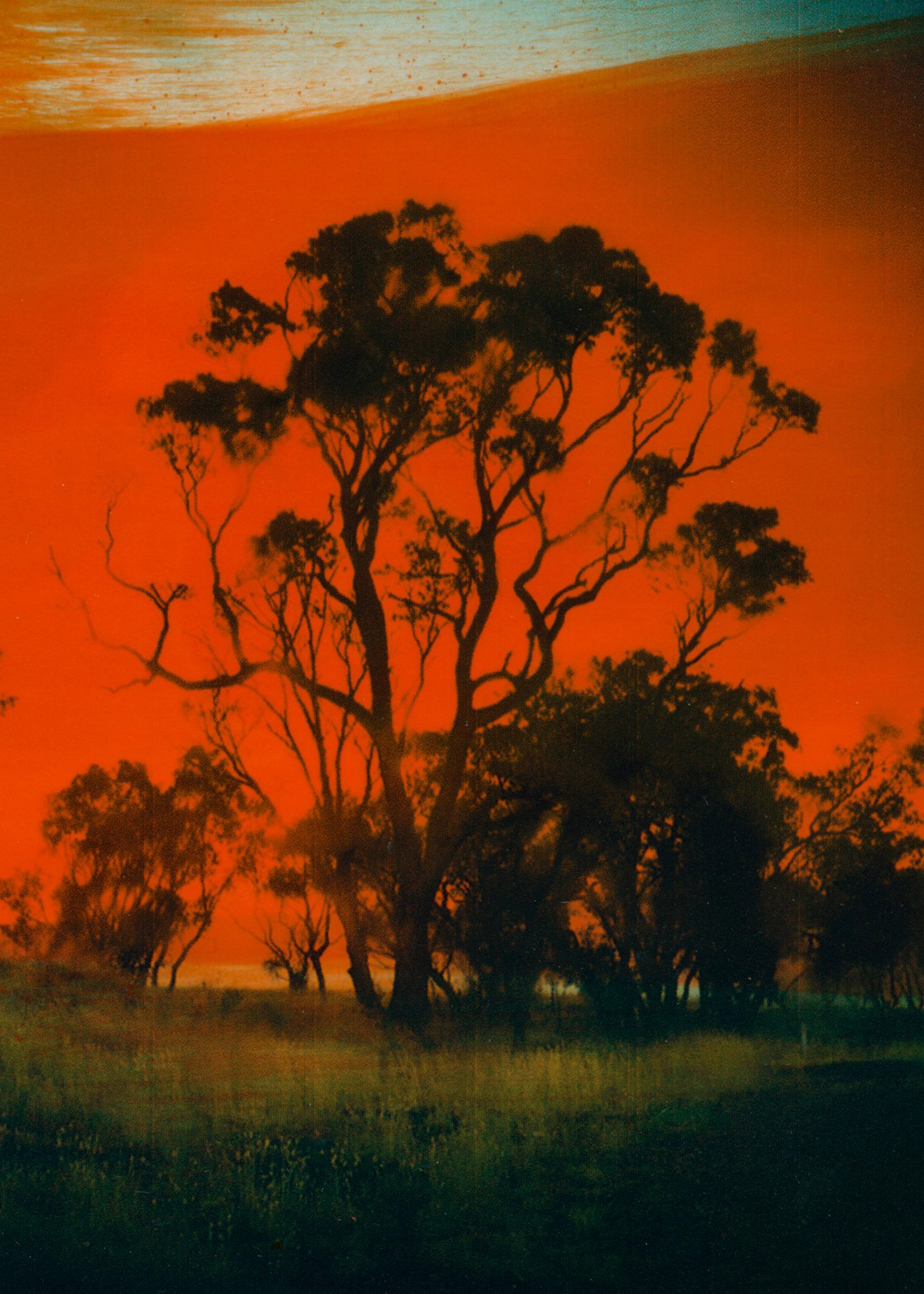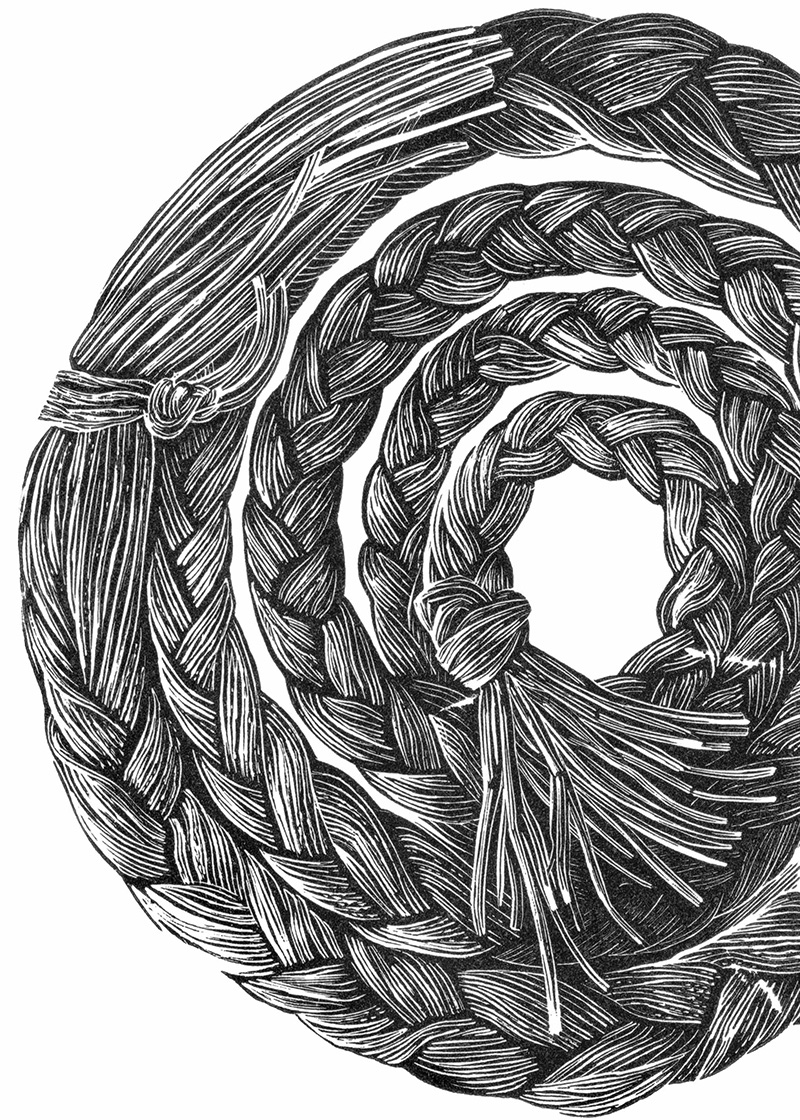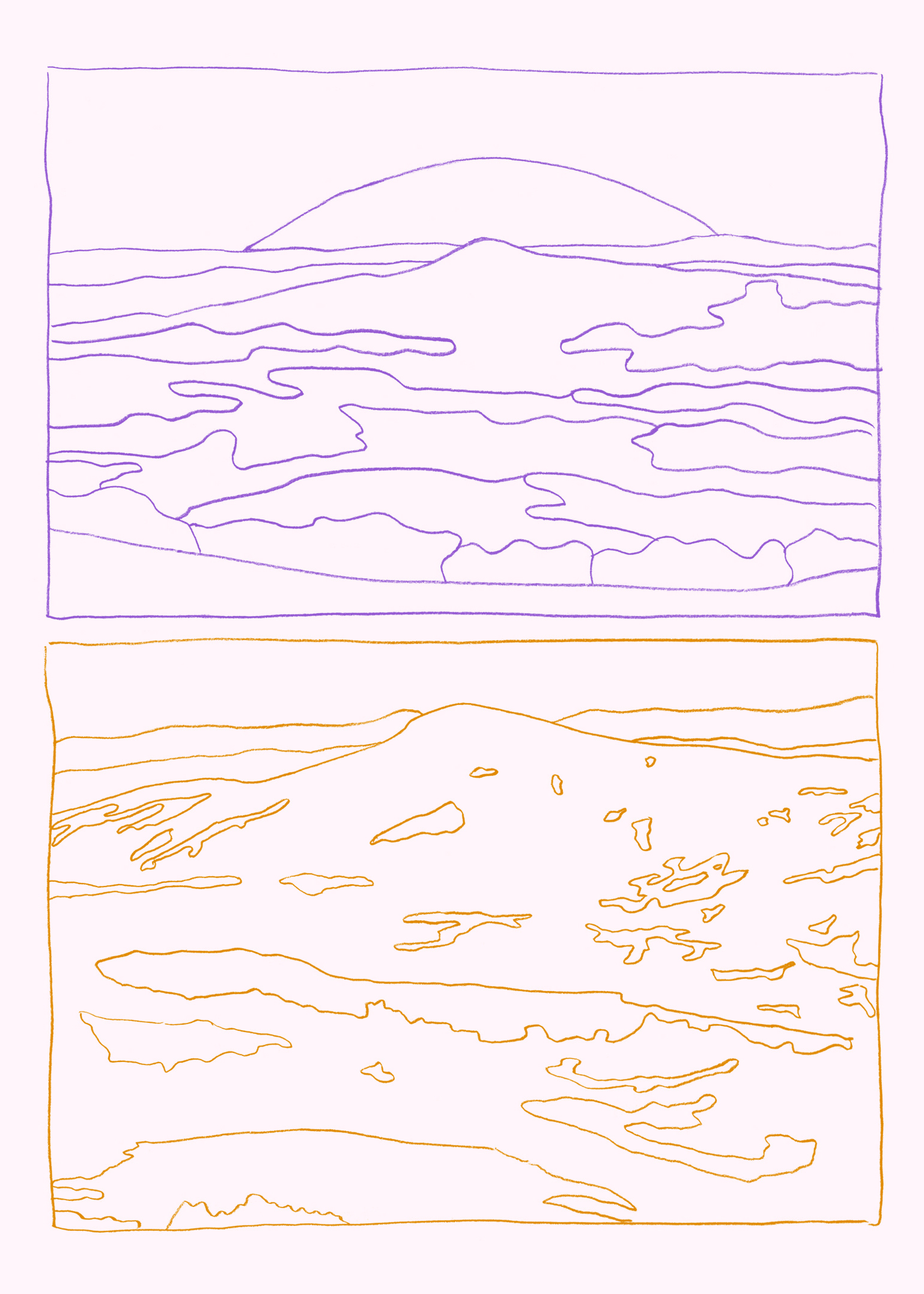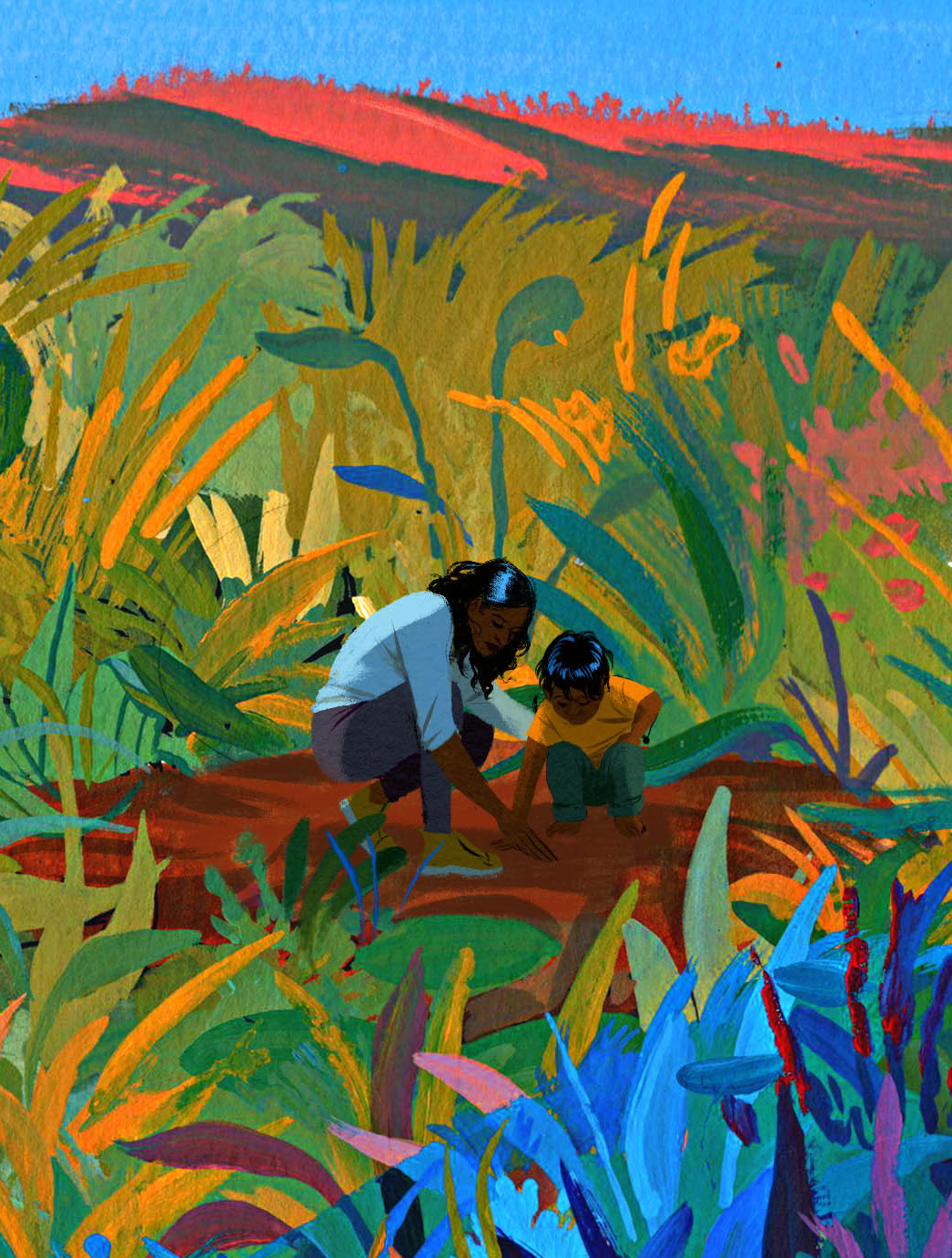Alexis Wright is a member of the Waanyi people from the highlands of the southern Gulf of Carpentaria in Australia. She is the author of the novels The Swan Book and Carpentaria, winner of the Miles Franklin Award, Australia’s most prestigious literary prize. Wright has published three works of nonfiction: Take Power, Grog War, and Tracker, a collective memoir of Aboriginal leader Tracker Tilmouth and winner of the Stella Prize. Her most recent book is Praiseworthy. In 2017 she was named the Boisbouvier Chair in Australian Literature at the University of Melbourne.
Waanyi writer Alexis Wright draws out the enduring message of the Seven Sisters songline: a timeless and universal story of a flight from danger that runs across the Australian continent, connecting land to sky.
When I was a small child, my family would often come together and talk for hours under the brightly lit stars in the yard around my grandmother’s place on the edge of town in North West Queensland. I can remember my family members pointing out the Seven Sisters star cluster and telling me how the sisters had fled to the sky to escape a bad man who was endlessly chasing them. He was a shapeshifter who showed up in different places, always in pursuit. Their story was part of a songline, or “Dreaming track”—one of many pathways that lead across the continent connecting the people to the land and its traditional laws—and it would remain in my memories.
The Seven Sisters sacred songline, the depth of which is known only by the traditional land owners, is a mighty story, linked with the night sky, that has lived forever and can be read in its sacred places over thousands of kilometers. It travels over a vast and wondrous ancient landscape, an ever-changing arid garden of rich flora and fauna; over the important sacred sites of the traveling creation story, in rock holes, sand hills, sand plains, creeks, soaks, gullies, caves, anthills, grasslands, spinifex landscapes; and in the desert winds of this ancient country that is forever changing and is always alive and powerful. But this creation story is much vaster, reaching into infinite space, time, and shapes, and can never be understood in a generalized way. Different parts of the story are associated with creation sites in various parts of the country—places where this story belongs, where its deep meanings have been passed down through the ages to its custodians to keep the land sacred.
The Seven Sisters is one of the major stories of law in our Aboriginal sovereign continent, known in degrees through the law structures and ceremonies that govern its traditional custodians. Today there are many general interpretations of the story, some misconstrued by anthropologists—which are now being corrected by the traditional custodians. The Seven Sisters songline could be generally seen as a story about running in fear; it could be seen more fully through Aboriginal thinking and deeper understanding as also being a love story, one of the greatest stories of thwarted love, and through many perspectives as a story of stories connected to place.
The eternal sagas of the Seven Sisters that took place in the creation of our ancient world have never left us; their struggle is one that is happening all over the Earth.
The deep knowledge of the Seven Sisters is held by the custodians wherever they are culturally and socially tied to the sovereign law of country. It is a story that extends through vast areas across the continent, such as the enormous and plentiful arid region of Central Australia, which includes the traditional lands of my longtime friend Vincent Forrester, a Luritja and Aranda activist, artist, and community leader. Vincent understands the Seven Sisters’ creation story as being the original ancient highways, streets, and laneways of the country; as the late poet Les Murray once described Australia, this is a vast map of song-poetry. Vincent believes that the Seven Sisters songline is the real story of the country, and he sees it as being a part of all our tribes. This continent is composed of endless ancient sagas, kept strong in their traditional country, that have held our interconnected families together since time immemorial—and continue to do so.
The eternal sagas of the Seven Sisters that took place in the creation of our ancient world have never left us; their struggle is one that is happening all over the Earth. We are a human family of approximately eight billion relations, interconnected across the world through our responsibility to care for country and each other—a family that extends to include everything of the world. Yet, there are more people than ever running from danger, from the endless terror of law breakers who create wars, steal land, oppress, and destroy the future of the world. As I write this, many are running from the destruction of their homes and lands in Ukraine, people who have nothing left except the sorrow in their heart. In their arms they carry only that which could not be abandoned—a child or beloved pet—as they walk into the unknown of a long, hard journey. These tragedies are not just caused by a single foe; they happen when the common law that upholds all the threads that keep the world together are broken, forgotten, violated in the engendering of destruction.
The Seven Sisters songline is a warning against breaking the laws that keep our culture together. The sisters, clustered together to fight off a shape-shifting challenge, show us how to conquer adversity. Their story helped shape our conscience; it strengthened our combined humanity, and our belief in the future of our culture. We can see this today as we continue to fight to reclaim our sovereignty and to care for our traditional lands.
This story is both ancient and modern, a universal law for sustaining our entire family, a family that includes all that lives in the world, the lands, rivers, mountains, seas, and the air that we breathe.
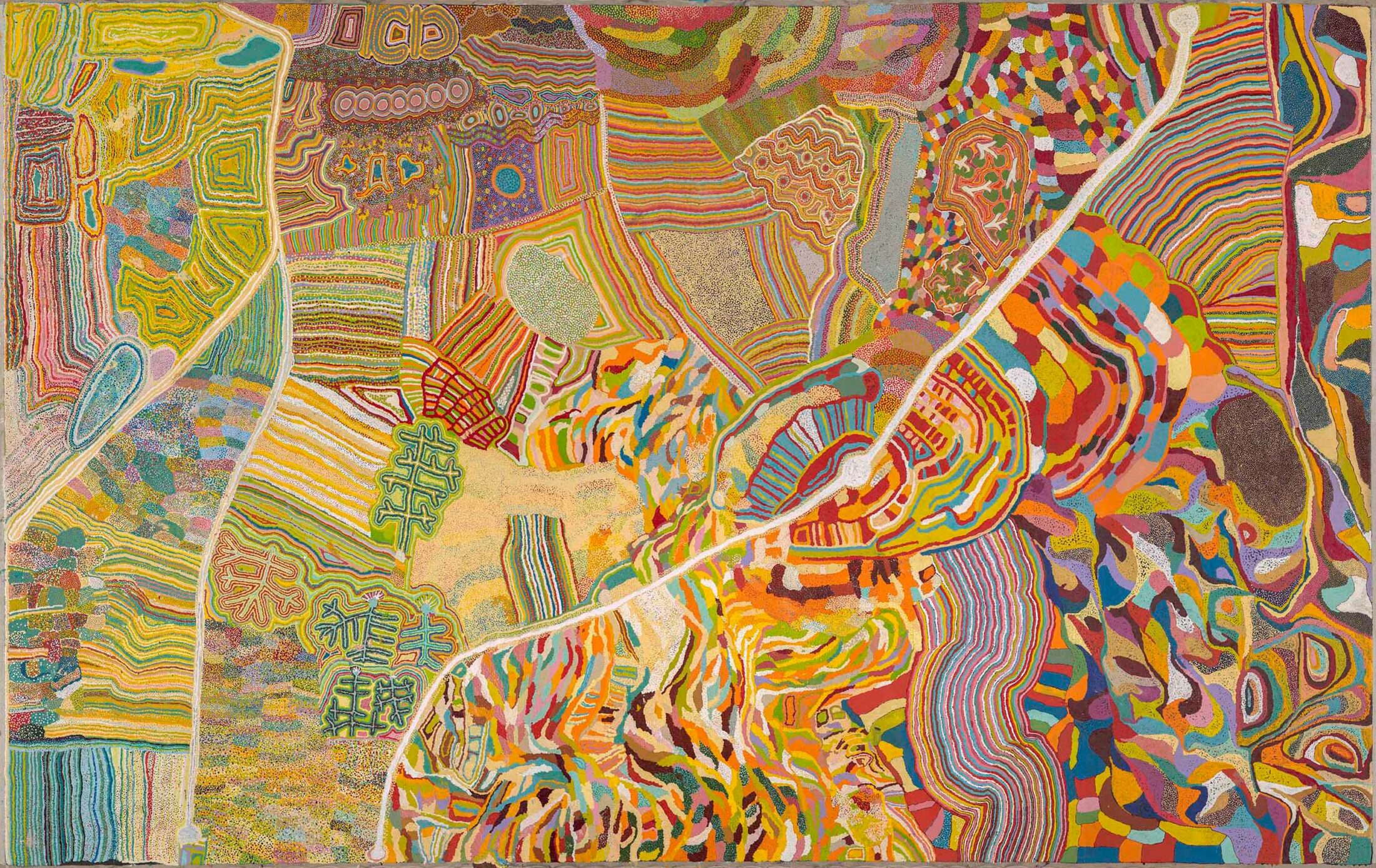
Stories Written in the Land
Conjuring textures and landmarks from across Australia’s vast terrain, ten artworks from an Aboriginal-led exhibition offer portals into the Dreaming track of the Seven Sisters songline.
